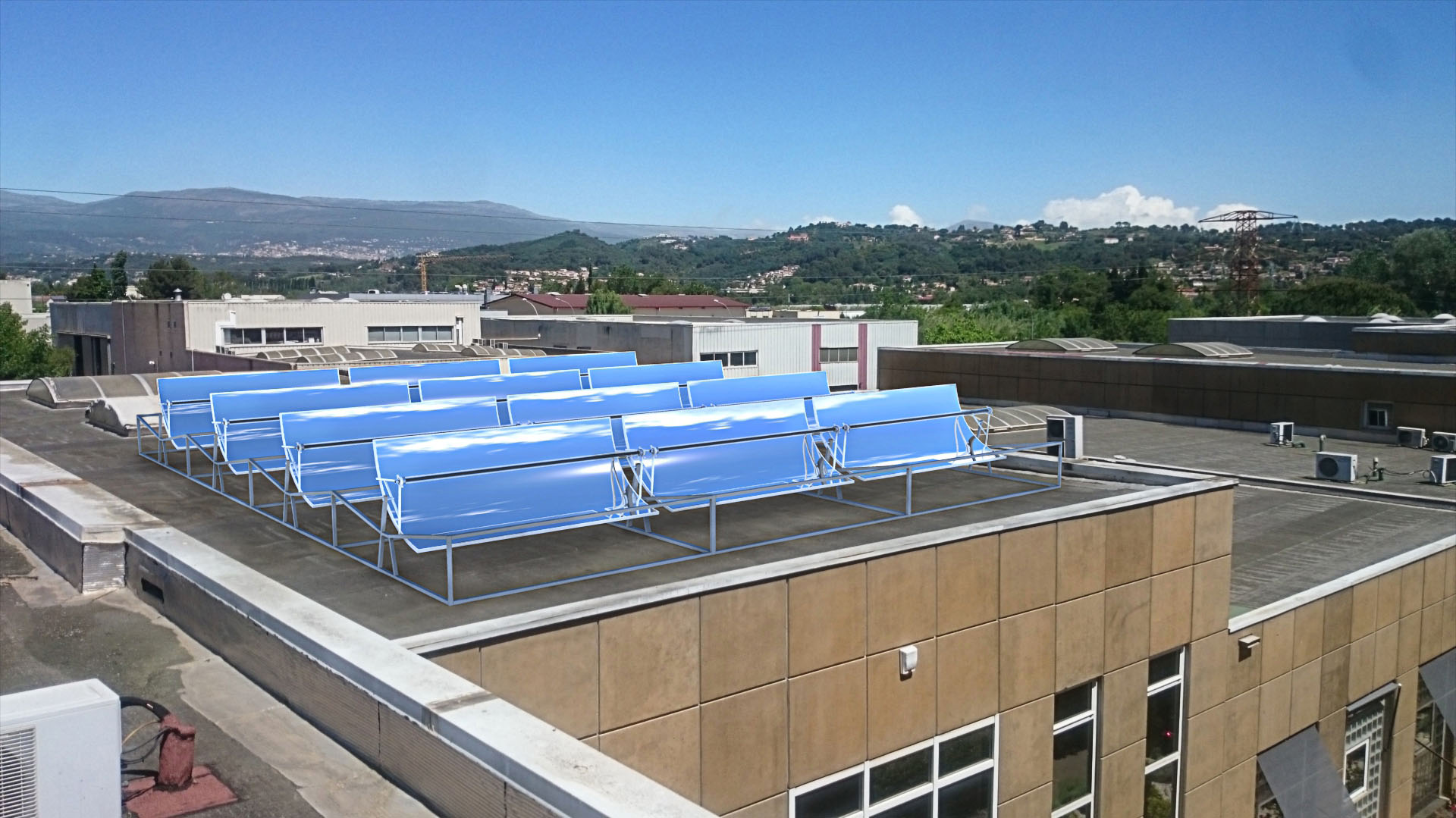
Zero-emission air conditioning system that doesn’t pollute
Zero-emission air conditioning system that doesn’t pollute. The ingenuity of four space engineers has created a zero-emission air conditioning system that doesn’t pollute our atmosphere when we turn it on.
Air conditioning for offices, factories, shopping centres and homes has long been recognised as a large contributor to carbon dioxide emissions, and boosting its efficiency would help to combat climate change.
Zero-carbon buildings are now a step closer thanks to the four pooling their expertise gained from building complex telecom and Earth observation satellites, and using it to create an environmentally friendly alternative to conventional temperature-control systems.
Using sunshine instead of electricity to power air conditioning and central heating, their system can also cool fridges and heat water.
Space expertise to cut carbon dioxide
Marie Nghiem, Yannick Godillot, Yann Vitupier and Charles Daniel worked at Thales Alenia Space in Cannes, France,on sophisticated satellites such as ESA’s Goce gravity-mapper and and Europe’s Jason ocean-monitors.
Determined to reduce energy consumption, the team drew on their skills in thermal engineering for satellites and their experience of rigorous testing.
“Building a spacecraft is unusually complex,” comments Marie. “It must function perfectly for 15 years, so our standards have to be extremely high.
“We leave nothing to chance and we test every component meticulously to make sure it will stand the test of time, even in the harshest conditions.”
They were looking for an idea and explored how they could use their space skills to develop alternative ways of running power-hungry cooling and heating systems in buildings.
Cooling with sunshine
The system uses curved solar mirror-troughs spread across a building’s roof to concentrate the sun’s power on to tubes to heat water to 200°C.
This pressurised water enters another unit to provide both hot and cold water – and how it does that remains confidential. The emerging water can be set at anywhere between –60°C and +65°C, which is then circulated to create the required temperatures for the different parts of the building. Below zero, a water–ammonia mixture is used as the refrigerant.
It can connect with the building’s existing chilled and hot water systems and functions even on a cloudy day thanks to stored energy, or power from other sustainable sources like biomass.
“It’s important to understand that we are not generating electricity from solar panels to power traditional air conditioning machines,” stresses Marie.
“Instead, we are using the Sun’s thermal energy to heat water inside the units and reach the required temperatures.”
Although a small number of other companies are also designing solar thermal systems, what makes the Helioclim version unique is that it can provide cooling down to –60°C and heating up to +200°C.
This means the company can tailor their machines to the requirements of almost any building with sufficient roof space, from offices, factories and commercial centres, where the temperature can vary from room to room, to hospitals and supermarkets, where refrigeration is a must.
The small amount of electricity needed to operate the pump and point the collectors towards the Sun is generated by solar panels.
The team hope not only to reduce carbon dioxide emissions to near zero, but also to enable buildings like hospitals to run autonomously inremote parts of the world where power is sparse.
“This kind of innovation could have a big effect in helping us to reduce our power consumption thanks to the rigorous methodology the Helioclim founders have brought from building satellites,” comments Claude-Emmanuel Serre from Tech2market, the French wing of ESA Technology Transfer Programme’s network of brokers who help businesses to use space technologies for enhancing their products and revenues.
The team is already designing thermal units for several customers in Africa and France for installation in 2017.
“If we can make quiet, reliable and durable heating and cooling systems that don’t pollute the atmosphere, then we can feel proud of ourselves,” ponders Marie.
“And if we can make a successful business at the same time, then we can feel doubly pleased.”
—













